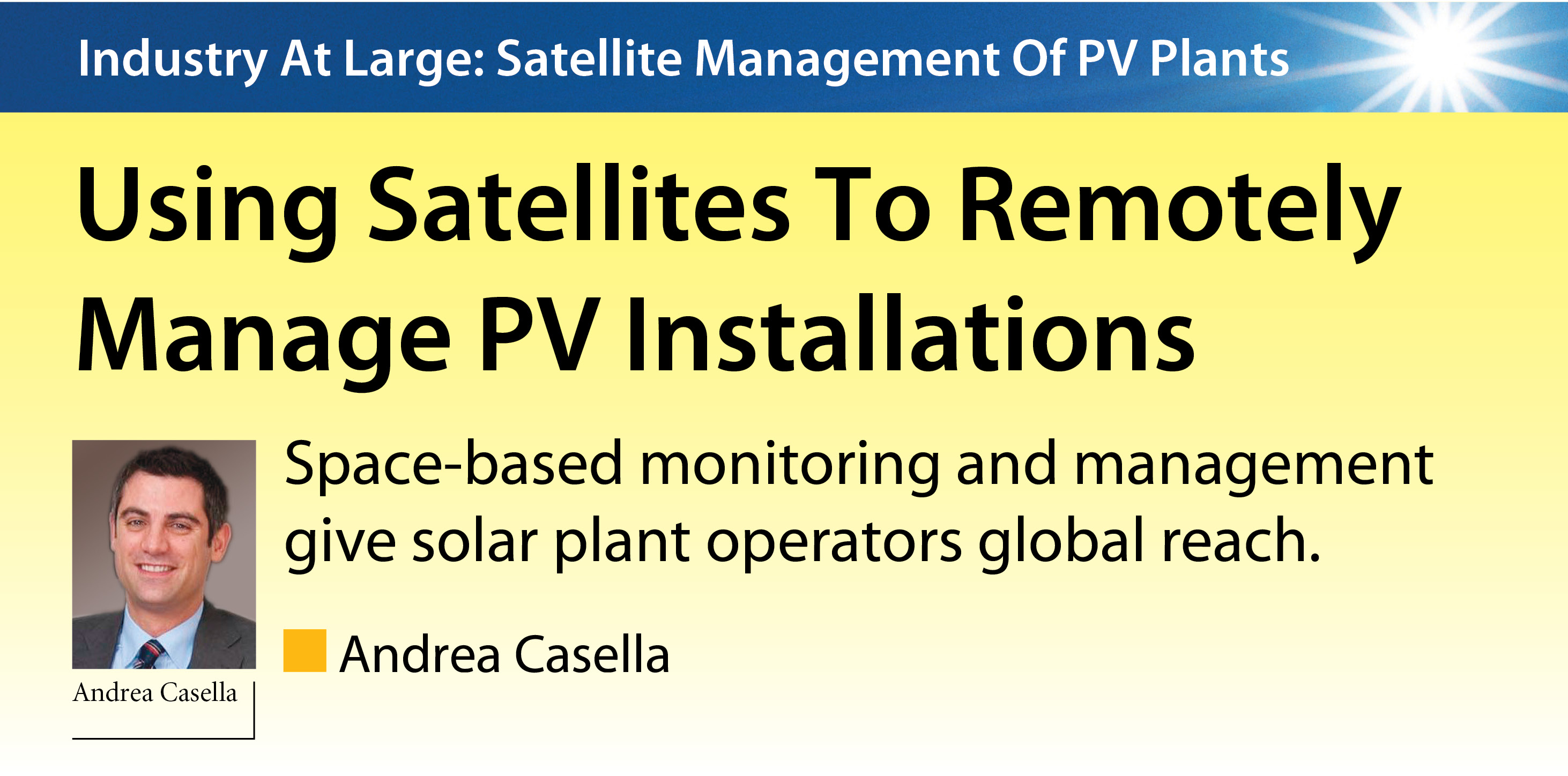

301 Moved Permanently
By their very nature, photovoltaic installations tend to be in hard-to-reach places - whether they are in the roof of an office building or a remote outdoor location. In the latter, often there is no effective communication infrastructure in place to help manage solar energy production - no grid, no telephone lines, no cellular phone coverage, no fast Web access. Therefore, managing the solar plant requires physical visits to the location, which can be time-consuming and costly. This is true even when the array is atop a skyscraper in the middle of a big city.
Industry experts estimate that an annual site visit to a PV installation can cost up to four times more than establishing and maintaining a remote monitoring system. Moreover, regular visits do not represent any guarantee against system failures, whereas remote monitoring typically helps detect and troubleshoot technical problems before they can become real system failures.
So how is it possible to implement a remote monitoring and control system for a PV plant that is difficult to access and has no local infrastructure? An answer readily available today is satellite technology.
Reliable, 24/7-monitoring via satellite can be applied to a PV system anywhere in the world. Because a solar array needs to be exposed to sunlight to supply power, it also means the installation can be seen clearly by orbiting satellites. Why not incorporate those satellites into a system of checking on an array? While you are at it, why not connect the PV system to the Internet so you can apply Web-based monitoring? Using satellites lets you consolidate monitoring and management of your PV systems onto a desktop.
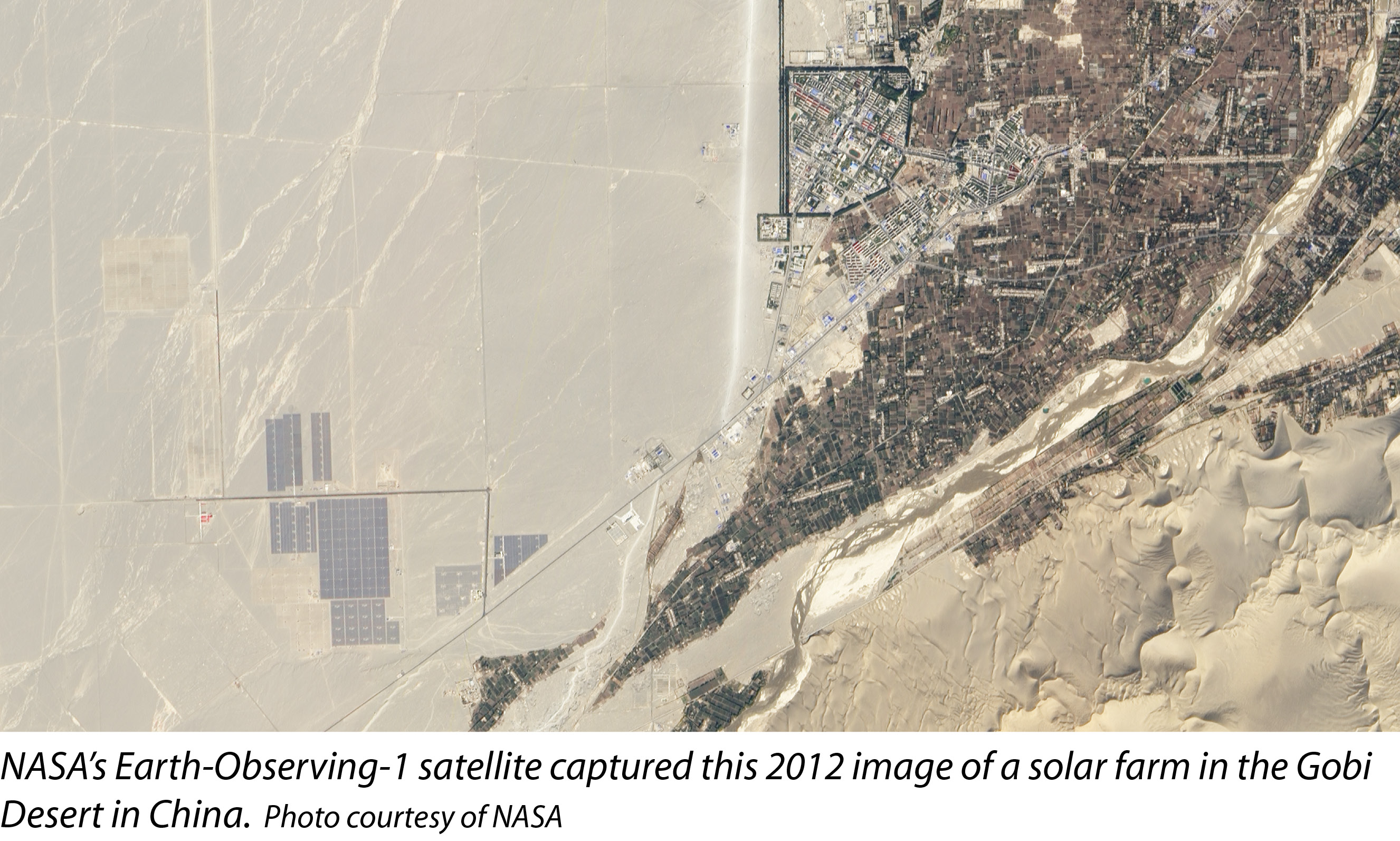
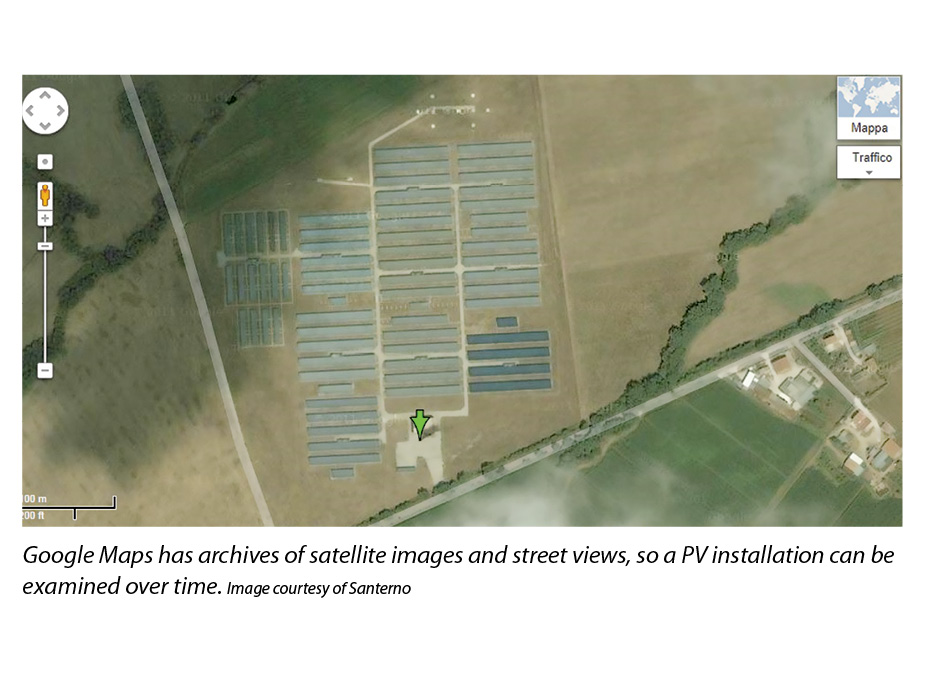
The main beauty of using satellite communications for PV monitoring is that plant location doesn’t really matter. As long as your PV installation has a clear line of sight with a geostationary communications satellite in the Clarke Belt, you can install a satellite dish that allows you to communicate with your PV plant. This enables the typical features that a supervisory control and data acquisition system offers: data-logging, remote monitoring and control, variable real-time access, system parameterization and optimization, software updating, troubleshooting, etc.
The bandwidth required for monitoring PV systems via the Internet is quite modest; if you have enough Internet bandwidth to enable a Web browser, you can manage a PV installation. The satellite signal needs to have sufficient strength to deal with conditions that may affect line of sight, such as cloud cover or rain attenuation, where raindrops actually absorb the signal. Lower radio frequencies - below 900 MHz - are less susceptible to absorption and can even receive a signal through vegetation. Most satellite communications operate at 2 GHz, and the higher the frequency, the more susceptible it is to interference.
Satellite Internet communications typically run over the Ka band, which operates between 18.3 and 31 GHz. The uplink is between 27.5 and 31 GHz, and the downlink is between 18.3 and 20.2 GHz. For data transmission, such as Internet protocol (IP) traffic, a Ka-band connection over a shared satellite download carrier may have a bit rate of 1 to 40 Mbit/s. Because Ka-band satellites use spot beams that target a smaller geographic area, they have a more focused signal and can use smaller, less expensive satellite dishes but do require a clear line of sight.
One of the biggest challenges with satellite Internet communications is latency. Latency is the round-trip time between a data or packet sending an information request and getting a response. The latency for data communications through a geostationary satellite is 20 times that of a terrestrial computer network. For some more robust data applications, such as streaming or voice-over-IP, latency makes satellite Internet a real challenge. For real-time monitoring of PV installations, however, latency can be overcome.
We first developed our own satellite monitoring system for PV plants at isolated locations in Sardinia and Sicily in 2007. The only Internet connection available was via satellite, but even with higher available bandwidth, high packet latency proved to be an issue. To provide reliable monitoring, the company developed a means to ensure a reliable satellite connection under any conditions. With a secure two-way data connection, it is possible to support both regular data updates (every 15 minutes) and historical data gathering of PV plant performance, as well as instantaneous point-to-point access for technicians to each single inverter or system in the plant.
A Web-based monitoring system can check local climate conditions, as well as the correct functioning of plant components and performance anomalies. For example, if there is heavy cloud cover, the Web-based monitoring system can tell you what the revised system output might be. It also provides a remote means to modify the operating parameters of specific plant devices and can provide troubleshooting information in case of a failure. Because the data is delivered via a Web browser, the visualization of data in graph form makes it easy to spot performance problems.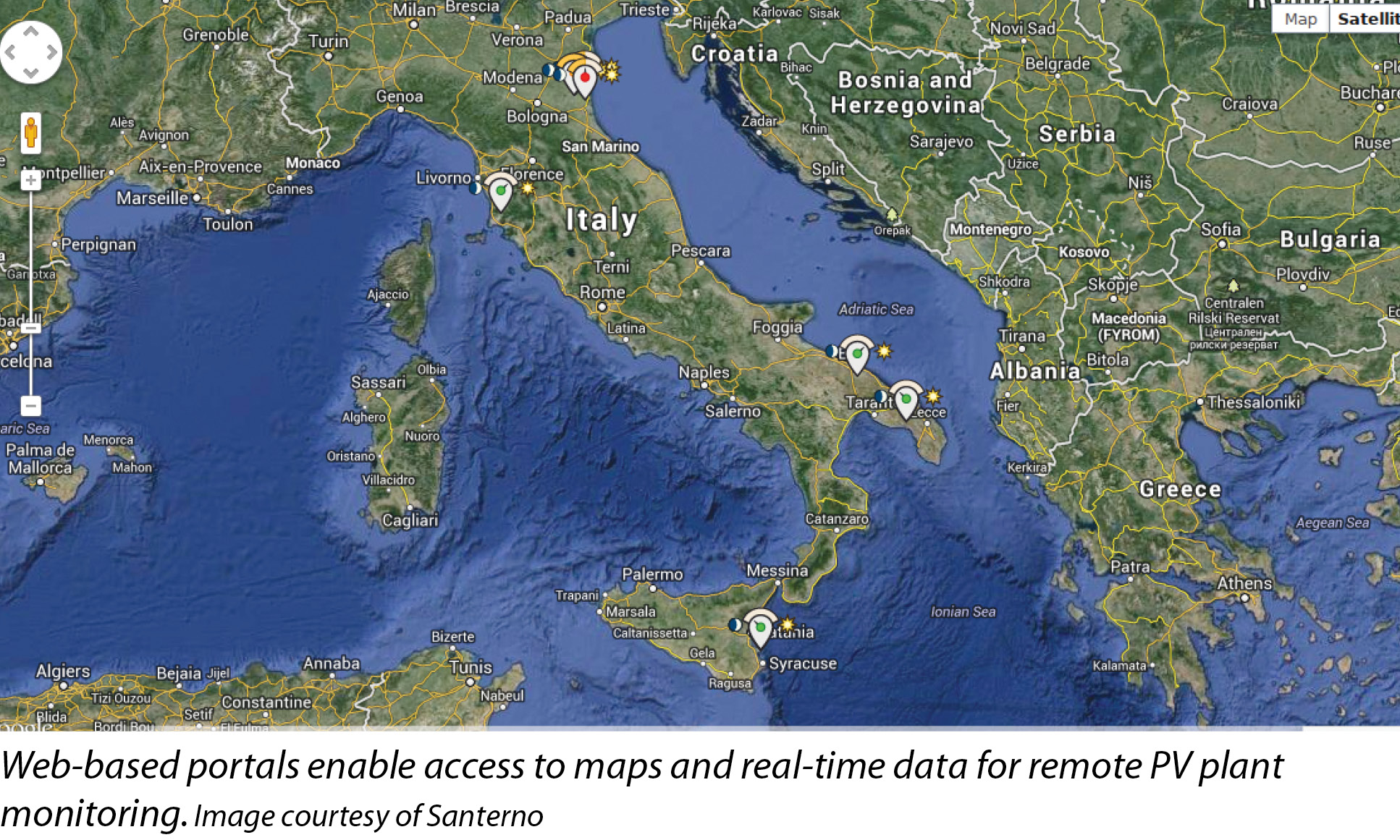
A bird’s eye view
In addition to Internet monitoring, you can use Google Maps for a valuable sky-high view of your solar facility. Google Maps are regularly updated, and by using the zoom feature, you can get an overhead view of the PV plant, as well as a street-level view for arrays in many populated areas.
Some large PV plants are located in off-grid locations, and use of real-time satellite weather monitoring helps predict PV plant energy production. Accurate weather forecasts can reduce the number of batteries needed to stabilize the micro-grid and reduce the need for maintenance visits.
Google Maps has an added advantage of providing a historical database of satellite images. For example, plant images of the first installations of our solar inverters in 1994 are still available in Google Maps - including street views, which can be valuable for comparison. Having both current views and past views for reference can reveal a lot about a solar installation, including changes in foliage growth or other factors that could impede performance.
GPS automates maintenance
Satellite technology plays an important role even in plant maintenance. One of the biggest problems for utility-scale plants in dusty climates, for example, is panel washing. A dust layer of one-seventh of one ounce per yard can cut solar power conversion by as much as 40%. In remote locations, sending a crew out to wash the panels of a large array can be very expensive, especially if you have to do it regularly.
Using global positioning system (GPS) technology, you can remotely control equipment for panel washing. Agricultural trucks, typically used for crop-dusting, can be equipped with special tools for panel washing and controlled remotely via GPS. GPS technology has evolved to the point that equipment can be operated with sufficient accuracy so that these vehicles won’t damage the panels or miss their marks.
Whether you are integrating PV and Internet technology for remote performance monitoring, using satellite views to keep an eye on your solar installation or relying on satellite technology such as GPS for maintenance, satellite technology offers valuable support for PV systems management. The technological possibility of bringing together satellite communications and PV systems opens a range of new opportunities in cost-savings and systems management. S
Industry At Large: Satellite Management Of PV Plants
Using Satellites To Remotely Manage PV Installations
By Andrea Casella
Space-based monitoring and management give solar plant operators global reach.
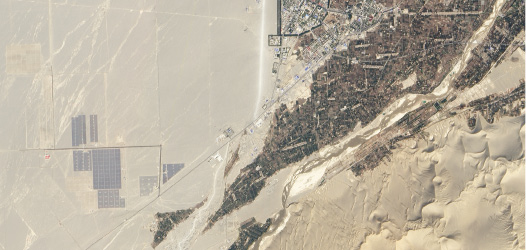

si body si body i si body bi si body b
si depbio
- si bullets
si sh
si subhead
pullquote
si first graph
si sh no rule
si last graph